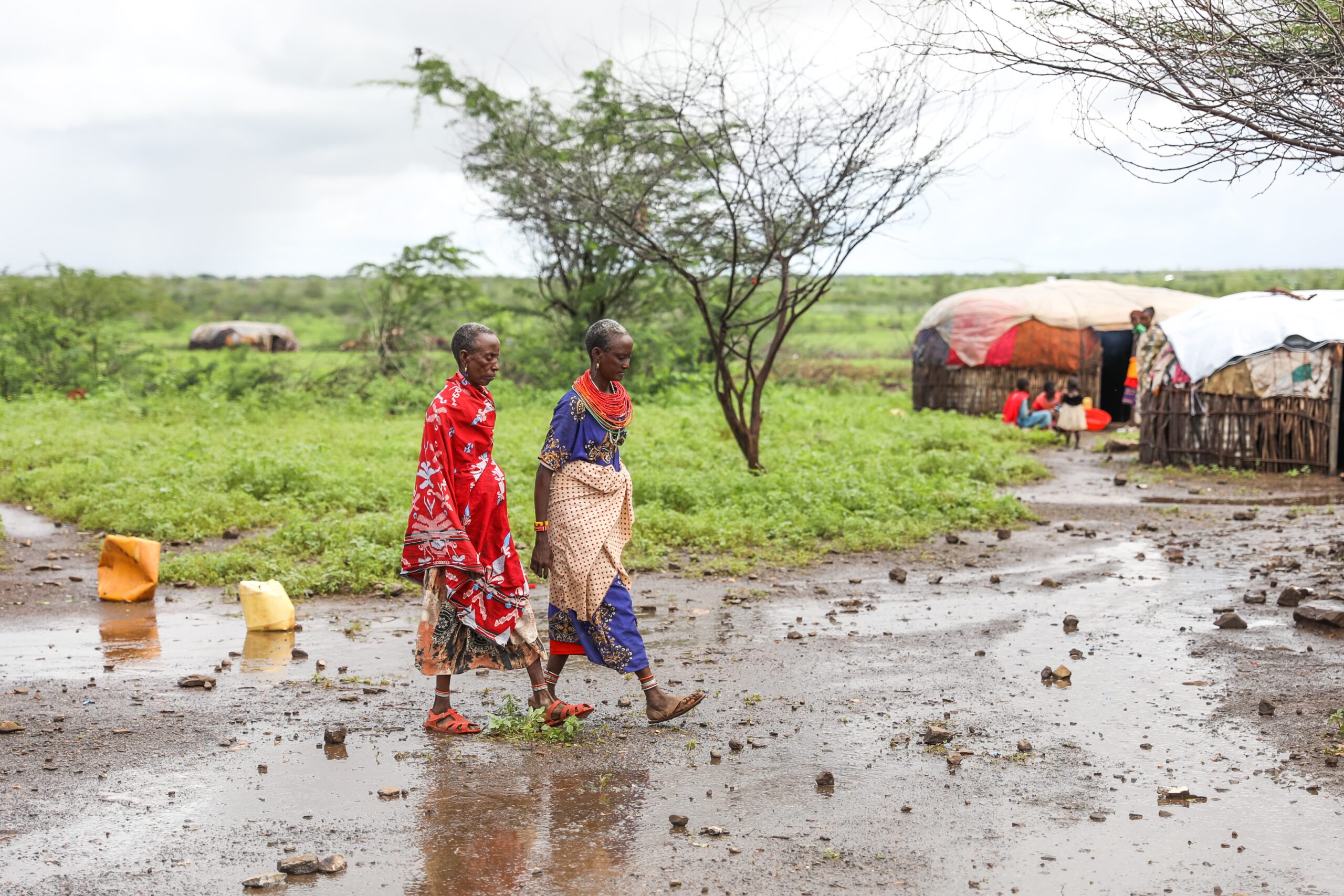Communities grapple with the aftermath of drought and floods
4 December 2023After visiting Marsabit County, Lilian Mathu, Plan International Kenya Communications Officer, shares the insurmountable challenges faced by communities after the devastating effects of the El Niño induced rains; rains that follow the worst drought in 40 years. She calls for sustainable solutions to help people coexist alongside our rapidly changing climate.

Over 600 kilometres from Nairobi, I am part of a team of experts who are visiting Marsabit County in the northern part of Kenya to assess the needs of people affected by the recent torrential El Niño induced rains, affecting more than half the country.
Prolonged drought
I visited the same part of the country in September 2022 to meet those affected by the worst drought in 40 years. There has been hardly any rain here for the past 5 years, turning the once fertile land arid and dry where nothing could grow. The consequences were dire, between July and September 2022, 3.5 million people, or 24% of Kenya’s population were estimated to be facing acute food insecurity.
Thousands of pastoralists in the area are dependent on their goats, donkeys and camels for survival but the stark reality of the drought was evident with shocking scenes of dead animal carcasses covering the ground. This time last year, the National Drought Management Authority in Marsabit reported that severe water and pasture shortages had killed more than 40,000 animals in the county.
Food and water was just as hard for people to find, with almost everyone I spoke to telling me that they only ate once a day, or sometimes not at all. Listening to these chilling stories painted a grim picture of how severe drought can have a devastating effect on families living standards fuelling acute food insecurity.
Torrential rains
So when the rain started in November 2023, many people were filled with hope and relief, but as the rains became torrential and showed no signed of stopping, happiness turned to fear as homes and schools started to flood, washing away whatever few possessions people still had left.
As we travel through Marsabit County, it’s plain to see how the raging floods have wreaked havoc on people’s usual daily routines. The torrents have caused severe destruction to houses, property and livestock. We saw families from around 200 households camping in makeshift shelters by the side of the road. We heard one story about a 70-year-old man who had drowned while trying to salvage some belongings from his flooded home.

Photo Credit: Lilian Mathu, Plan International Kenya
The families we met had lost everything, including their livestock and belongings. Many families have been evacuated to temporary shelters. Others have squeezed into neighbours’ huts. We met a group of adolescent girls who were sleeping alone in a school putting them at risk of harm. They told me their biggest challenge is managing their periods without any sanitary pads.
Some roads were impassable by car leaving us with no option but to walk miles to reach the villages we had come to assess. Some communities were completely cut off and could not be reached at all as the roads were too badly flooded.
Climate induced crisis
Whilst humanitarian agencies are combining their efforts to address the various needs of the people of Marsabit, it’s devastating to witness already vulnerable families bearing the brunt of 2 consecutive tragedies, from the prolonged drought to severe flooding in the space of just a few weeks.
Plan International’s emergency response team is working hard to deliver humanitarian assistance to those affected by the extreme weather events in Kenya. However, there is no doubt that this is a climate induced crisis, exacerbated by the El Niño weather phenomenon.
Everyone on the planet has the right to live in a safe environment so it’s imperative that we find sustainable solutions so that people can coexist alongside our rapidly changing climate.
Categories: Emergencies


